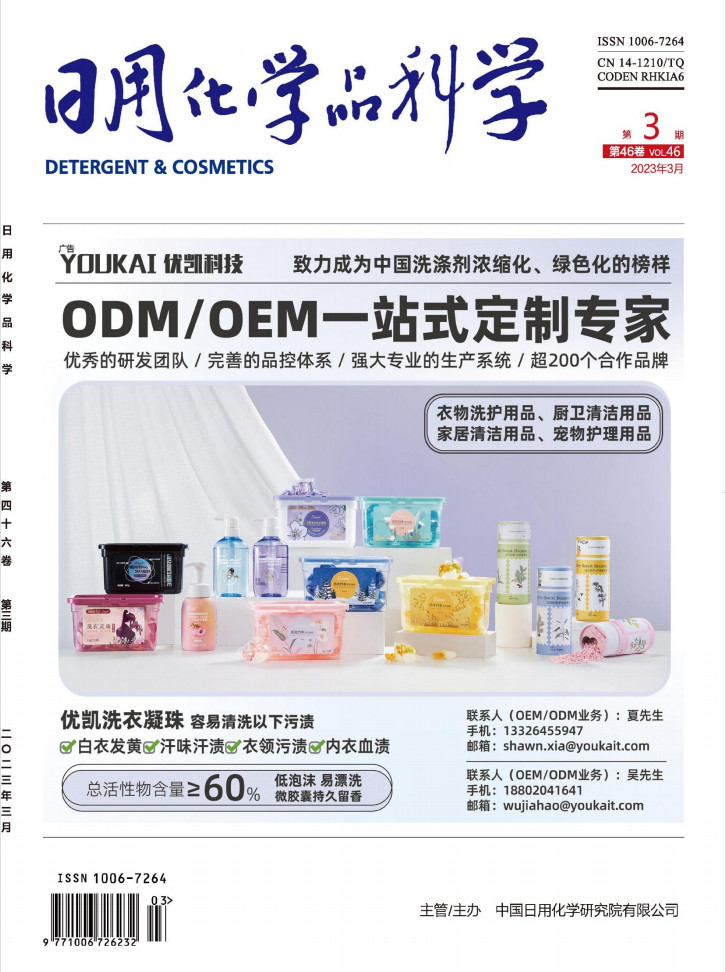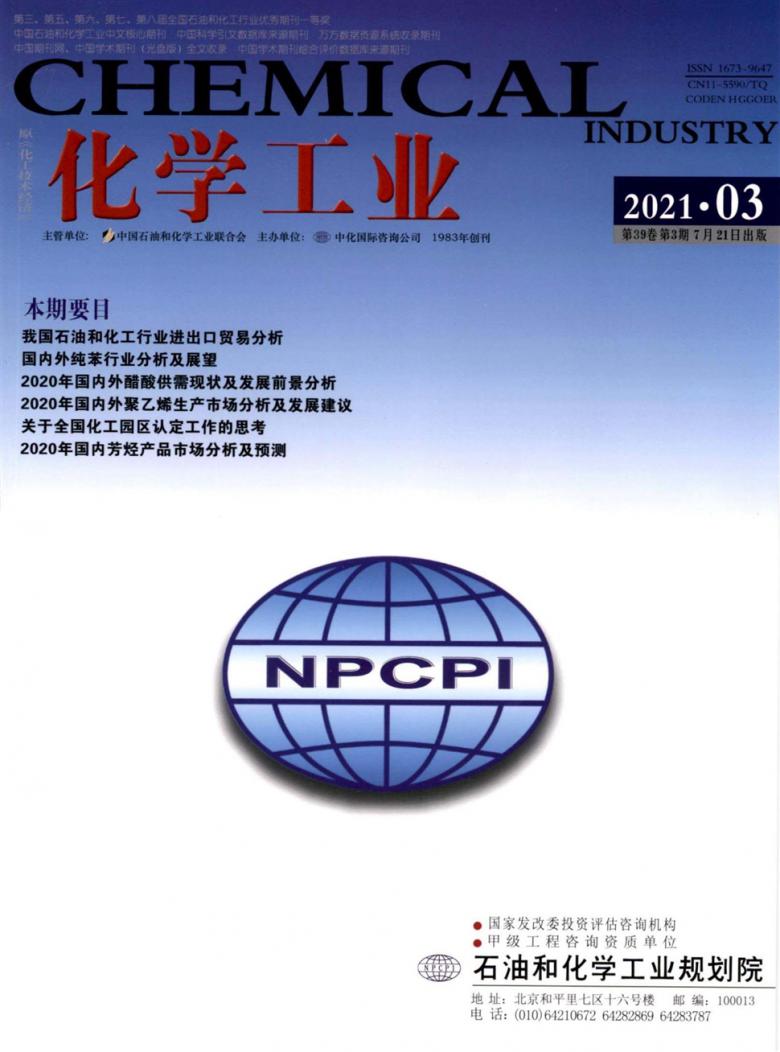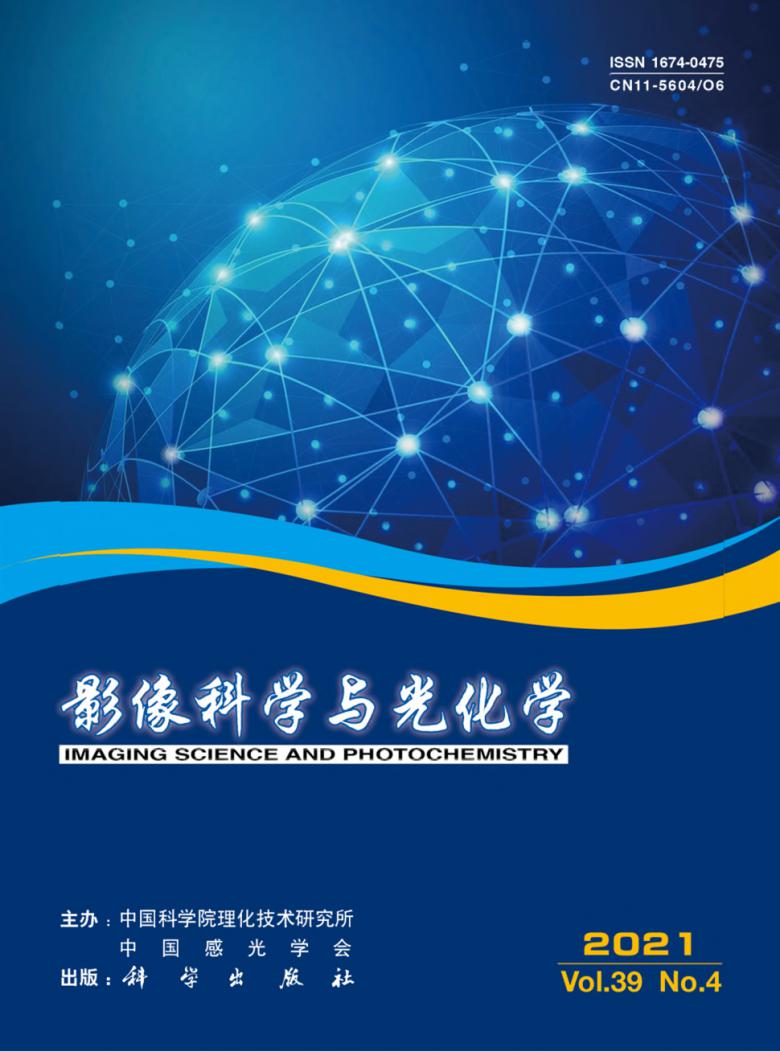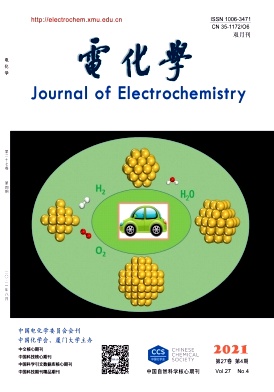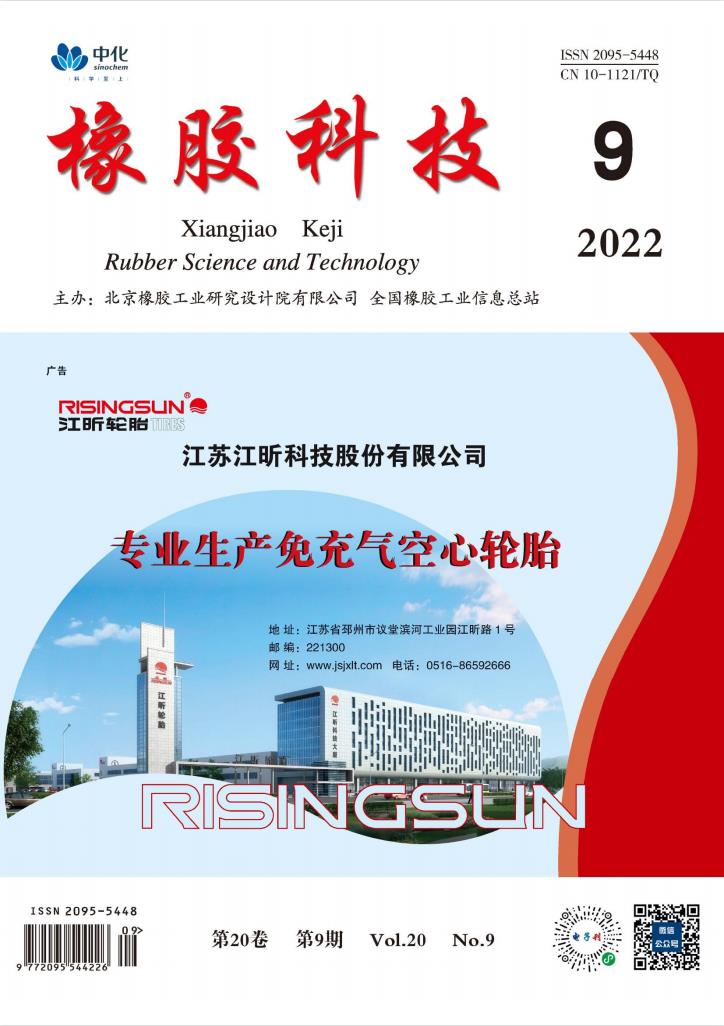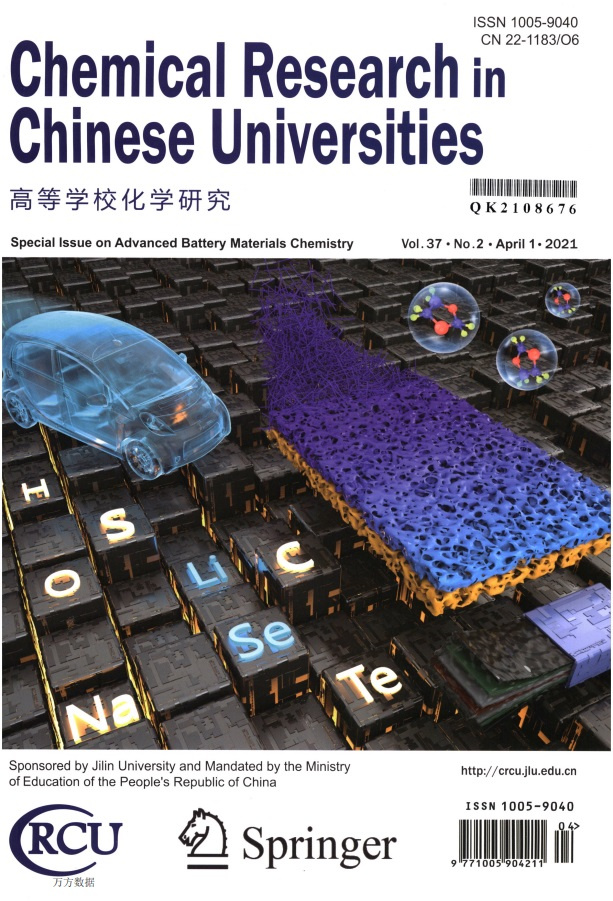
Chemical Research in Chinese Universities投稿地址
Chemical Research in Chinese Universities详细信息
Chemical Research in Chinese Universities
Chemical Research in Chinese Universities
Chemical Research in Chinese Universities投稿要求
Chemical Research in Chinese Universities杂志投稿须知:
1、MANUSCRIPT SUBMISSIONWhen you first submit your paper, please upload the Word or PDF file. When your paper is accepted, you will be required to send the original source files. Submissions should be accompanied by a brief covering letter from the corresponding author. All correspondence, including the editor’s decision and request for revisions, will be done by e-mail. Chemical Research in Chinese Universities applies a non-refundable submission fee which the author(s) have to pay when the manuscript is ready to submit . If a paper is accepted for publication there will also be a publication fee.。
2、MANUSCRIPT PREPARATIONTitle: The paper title should be simple, concise and informative. Author(s): A list of all authors and their corresponding addresses with post codes for an effective mail delivery should be provided. The telephone and fax numbers (with country and area code) in addition to the e-mail address and the complete postal address of the corresponding author should be given. Abstract: An abstract is a summary of the content of the manuscript. Figures, tables, chemical structural formula, equations, reference citations should be avoided. Keywords: A list of 3-5 keywords should follow the abstract. Text: Organize the text as Introduction, Experimental, Results and Discussion, Acknowledgment and References. Physical quantities, units and symbols, etc., when used, should be consistent with the International System of Units (SI) and the Quantities and Units of the StateStandards of the People’s Republic of China. Latin and Greek Characters should be labeled. Figures and Tables: Figures and tables should be consecutively numbered with Arabic numerals in the order of in which they are mentioned in the text; each figure should have a descriptive legend. All illustrations should be in a finished form suitable for reproduction. No figures should exceed 10 cm×12 cm, which is large enough to take a reduction of 50%. Coordinate axes on figures should be labeled with the ordinate label written vertically and labels for quantities with dimensions should include units. Drawings should be of professional q uality or generated by high-resolution computer graphics. Equations: An equation is numerically numbered (Arabic numeral), and has the number put on its right side. References: References to the literature should be cited in the text by Arabic numerals in square brackets set on the text line, and listed numerically at the end of the paper. Style and punctuation of references should be in accordance with the following examples:[1]Hu S. Q., Huang K. K., Hou C. M., Yuang H. M., Hu B., Feng S. H., Chem. Res. Chinese Universities, 2010, 26(5), 675[2]Pines H., The Chemistry of Catalytic Hydrocarbon Conversion, Academic Press, New York, 1981, 170。
3、PEER REVIEWAll submissions will be reviewed by at least two referees selected by the editor. The author will be informed whether the manuscript is accepted within two months. If case of rejection, the manuscript won’t be returned to the authors. The revised manuscript must be sent to the editor within 50 days, from the date on which the editor sends the manuscript to the author, otherwise the editor will consider that the manuscript has been withdrawn by the author voluntarily.。
4、COPYRIGHT TRANSFERThe Copyright Transfer Statement must be returned to the Editorial Department of Chemical Research in Chinese Universities when the manuscript is accepted for publication.。
5、RESEARCH DATA POLICYThe journal encourages authors, where possible and applicable, to deposit data that support the findings of their research in a public repository. Authors and editors who do not have a preferred repository should consult Springer Nature’s list of reposi tories and research data policy.General repositories - for all types of research data - such as figshare and Dryad may also be used.Datasets that are assigned digital object identifiers (DOIs) by a data repository may be cited in the reference list. Data citations should include the minimum information recommended by DataCite: authors, title, publisher (repository name), identifier.DataCiteSpringer Nature provides a research data policy support service for authors and editorsThis service provides advice on research data policy compliance and on finding research data repositories. It is independent of journal, book and conference proceedings editorial offices and does not advise on specific manuscripts.
Chemical Research in Chinese Universities杂志简介
《Chemical Research in Chinese Universities》1984年创刊,是中华人民共和国教育部委托吉林大学主办的化学学科综合性学术刊物。
《Chemical Research in Chinese Universities》由中华人民共和国教育部从全国重点高等院校和中国科学院聘请91位学术造诣精深的化学家组成学术阵容强大的编委会,由著名高分子化学家周其凤院士任主编。
《Chemical Research in Chinese Universities》以研究论文、研究快报、研究简报和综合评述等栏目集中报道我国高等院校和中国科学院各研究所在化学学科及其交叉学科、新兴学科和边缘学科等领域所开展的基础研究、应用研究和重大开发研究所取得的最新成果。
《Chemical Research in Chinese Universities》以“新、快、高”(即选题内容新,文章发表速度快和学术水平及编辑出版质量高)为办刊特色,刊载国家自然科学基金、攀登计划、“八六三”和“九七三”计划资助项目及其它科学基金资助项目成果文章达90%以上。
《Chemical Research in Chinese Universities》曾获1996年国家教委优秀科技期刊二等奖、1999年全国优秀高等学校自然科学学报及教育部优秀科技期刊评比一等奖。
Chemical Research in Chinese Universities统计分析
影响因子:指该期刊近两年文献的平均被引用率,即该期刊前两年论文在评价当年每篇论文被引用的平均次数
被引半衰期:衡量期刊老化速度快慢的一种指标,指某一期刊论文在某年被引用的全部次数中,较新的一半被引论文刊载的时间跨度
他引率:期刊被他刊引用的次数占该刊总被引次数的比例用以测度某期刊学术交流的广度、专业面的宽窄以及学科的交叉程度
引用半衰期:指某种期刊在某年中所引用的全部参考文献中较新的一半是在最近多少年时段内刊载的
平均引文数:在给定的时间内,期刊篇均参考文献量,用以测度期刊的平均引文水平,考察期刊吸收信息的能力以及科学交流程度的高低
热门评论
投稿接受后还有多次校稿,编辑老师非常仔细,也是很好的学习的过程。因为被拒审三次,拖的时间比较长,问编辑部进展,编辑部很快回信说初步接受,可以给刊用通知,也很快收到了。给个赞!
在投稿后打电话到编辑部希望能快点审回来,编辑答应送审比较快的专家审稿。放假回来,就收到审稿意见(修改后再审)。专家指出的问题确实让我心悦诚服。按意见仔细修改后,1月初就收到了录用通知。整个过程还是比较顺利。
投稿网送货也快,这个服务也是很好的,并且杂志都是新的,文章质量很好,很权威,包装也很好,内容很丰富,很满意的,谢谢卖家。下次会回购的!
7月13号投了这个杂志,9月9号发邮件表示初步录用,按照录用通知单进行修改,还要求提供全文中文译稿。修改用时一个月,一周之后通知录用。审稿速度很快,要求文章有创新点。然后就是根据修改意见认真修改,编辑很好,中间多次打电话问相关事情,都很耐心,热情解答。
3月初投稿,5月初就收到了录用通知。审稿周期相对还是比较快的。退修的时候,三个审稿人中,其中两个给的审稿意见都比较中肯,还有一个明显没看文章。总之,投稿过程还是比较顺利。
Chemical Research in Chinese Universities杂志内容权威性比较高,采编团队强大,可读性很高。投稿网卖的杂志挺齐全的噢。以后买杂志在这选就ok了。呵呵!!
审稿速度很快,一个月多一点专家意见返回了,是小修,改回之后很快就收到了采用通知,个人感觉效率很高,评审意见中对论文的一些细节都提出了很严谨的要求,反而对于文章的内容和结论都没有改动和质疑的地方。
很幸运的是在老师指导下,多次修改。文章被杂志收录了,对我是个很大的激励。审稿老师的意见很是中肯,对文章内容修改相当细致。编辑老师态度也很好,不厌其烦的帮我分析。希望杂志越办越好。
本人第一次投了一篇关于高教发展战略杂志的文章。今天收到拒稿消息,虽然有点小失落,但是审稿速度挺快的,而且审稿意见很中肯,对文章的修改有很大的帮助。编辑态度也超好。是一个很不错的南大核心杂志。
之前投了两篇,都中了,感觉还是比较好中,不错的杂志!审稿人所提问题很犀利,非常专业!编辑很敬业,校稿非常仔细。个人觉得文章有点新意的,论据充分的,接收的可能性还是蛮大的。推荐大家投稿。
相关问题
- Chemical Research in Chinese Universities是正规期刊吗?
- Chemical Research in Chinese Universities是什么级别的期刊?是核心期刊吗?
- Chemical Research in Chinese Universities评职称可以吗?单位认可吗?
- Chemical Research in Chinese Universities是北大核心吗?是中文核心吗?
- Chemical Research in Chinese Universities是科技核心吗?
- Chemical Research in Chinese Universities是统计源核心吗?
- Chemical Research in Chinese Universities是南大核心CSSCI吗?
- Chemical Research in Chinese Universities是CSCD期刊吗?
- Chemical Research in Chinese Universities是国家级期刊吗?
- Chemical Research in Chinese Universities是SCD期刊吗?
- Chemical Research in Chinese Universities是国家新闻出版署第一批、第二批学术期刊吗?
- Chemical Research in Chinese Universities好投吗?Chemical Research in Chinese Universities简介
相关期刊
更多常见问题
| Q:论文发表的时候可以一稿多投吗? |
| A:一稿多投的行为是典型的学术不端的行为,是国内外学术界都明令禁止的行为,原因主要在于涉及到文章版权归属的问题,如果作者的文章已经被某个杂志社录用,或者同时被两家杂志社录用,就会涉及到版权纠纷,作为杂志社都会保护本社的合法权益,到这时作者就会比较麻烦,吃官司都是小事儿了,被打入黑名单降级降职影响可就太大了。 |
| Q:职称论文发表对时间有限制吗? |
| A:职称论文发表并没有明确规定截止时间,需要作者结合自己所在地区的具体规定自己安排发表时间,一般职称评审,各地区都会明确规定申报材料的最后期限和截止日期,我们结合这个日期来考虑何时发表文章就可以,大部分地区职称评审都集中在每年的8-10月之间,有的地区要求7月中旬开始交材料,最晚8月底之前,有的则是要求8月中旬交,还有部分地区要求截止时间为申报时间上年的12月31日,所以,各个地区的具体要求并不同,申报者需要在提交材料前确保自己的文章已经见刊并且被相应的数据库检索即可。 |
| Q:网上发表论文如何防骗?可靠网站与可疑网站如何区分? |
| A:由于发表论文的需求远远多于杂志版面的供应,再加上众所周知的审稿难!审稿慢!选择论文发表网站发表表论文确实能解决以上问题。卖方市场的出现加之发表论文的刚性需求,就导致出现先付款后发表的现状。论文发表网站正规与否是通过网站从始至终所提供服务体现出来的,任何交易只要存在时间差都会有风险,但这个风险是可以通过您的智慧来避免的。因为不是所有论文网站都是骗子,你要做的就是过滤掉没保障的网站,选择可靠的论文发表网站! |
| Q:一般期刊需要提前多久准备? |
| A:省级、国家级期刊建议至少提前6个月准备。一般来讲,杂志社为了确保每期杂志正常出刊,都会提前将当期之后1-3个月的稿件提前安排好,而一些创刊较早,认可度更高的热门期刊,来稿量较大,发表周期可能就会更久。提前准备,意味着杂志的可选择性更多。 |
| Q:核心期刊需要提前多久准备? |
| A:核心期刊建议至少提前12个月准备,核心期刊正常的审稿周期为1-3个月,且审核严格,退稿、返修几率更大,这意味着在流程上耗费的时间更久,且核心期刊版面有限,投稿竞争更加激烈,即使被录用,排刊也比普通期刊晚很多,因此需要更早准备。 |
